I TE TAU TUARUA
TE WHAKAAKO I TE TUHI Ā-RINGA
I te tau tuarua: Te Raupapa Whakaako Pū
In the first two years at kura, ākonga have been learning to correctly form first the lowercase letters, followed by the capital letters in this sequence:
Ngā pūriki
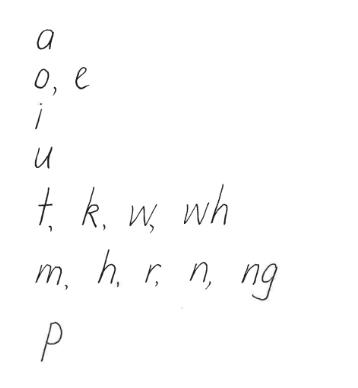
Ngā pūmatua
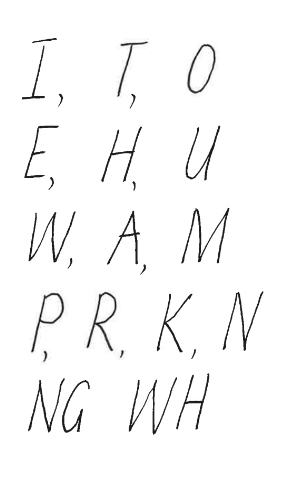
NOTE: The lowercase and uppercase o, O, should be formed as an oval.
Ākonga can practice handwriting using a combination of uppercase and lowercase letters.
1) Start with the highest utility letters and sounds - the vowels (oropuare)
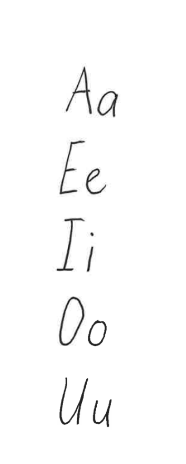
2) Follow with the consonants (orokati)

3) Ask ākonga to verbalise as this practice supports the reinforcement of sound-letter correspondence and helps solidify the connections between auditory and visual learning.
4) Spend as much time as necessary on each upper-lowercase combination to ensure the letters are being formed correctly. Forming the letters where the upper and lowercase are the same shape (i.e. Oo, Uu, Kk, and Ww) shouldn’t take as long as making sure the Aa, Ee, Ii, Hh, Mm, Nn, Rr, Tt, NG ng and WH Wh are formed correctly. You may need to also spend additional time ensuring ākonga have correctly placed the p and g to be sitting correctly on the line.
Add forming the syllables (kūoro) into the practice to synchronise with what ākonga are learning in pānui (refer to Rangaranga Reo ā-Tā - Ngā Kūoro me te Tautohu Kupu).
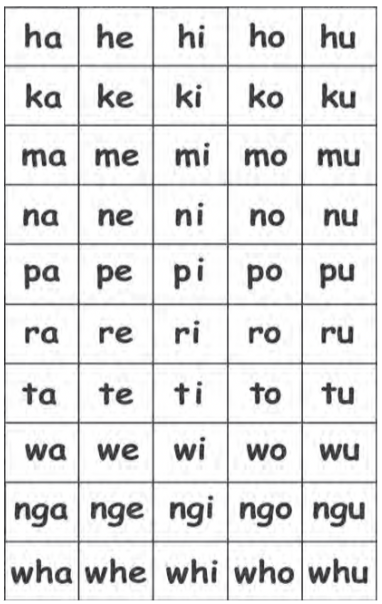
i.e
Ha ha
Ka ka
Ma ma etc.
This way their learning of kūoro in pānui is being reinforced. As ākonga advance in their learning of kūoro, extend the handwriting practise to include simple words formed from the consonant-vowel combinations (orokati-oropuare) e.g. haka, pene etc to more complex words e.g. tēnei.
Use the practice sentences from Kete Kupu Āhukahuka avoiding those sentences that include these forms of a and g in the handwriting lesson as well.
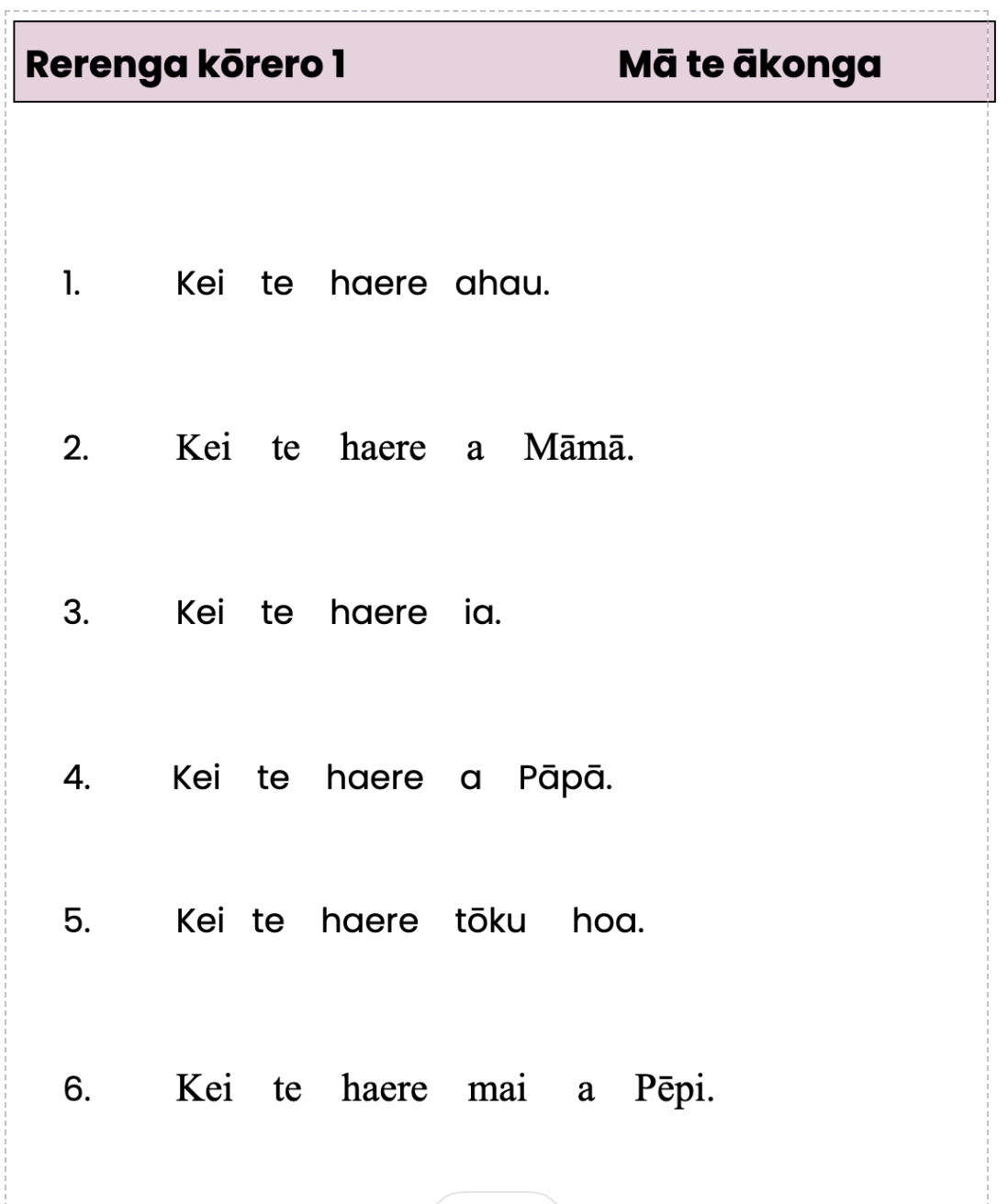
I te tau tuarua: Te Raupapa Whakaako Tohutau
Continue presenting numerals in their formation groups during the second year with a focus on correct formation and legibility.
Formed with straight lines
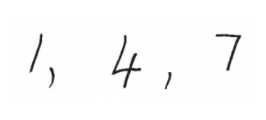
Formed with forward curves

Formed with backward curves

I te tau tuarua: Te Whakaako i te Tuhi ā–Ringa
1) Model the letter or numeral and verbalise the movement for groups of ākonga or individuals where you notice incorrect formation. Verbalisation should include where to begin, the direction of the movement, and where to stop.
2) The ākonga would all then practise writing the letter or numeral in their handwriting books, repeating your verbalisation as they do so.
3) Feedback should be given immediately to ensure ākonga are not reinforcing incorrect forms, particularly when they are first learning to write.
Verbalisations are no longer necessary once ākonga know where to start and how to form letters correctly.
4) Walk around the room giving guidance as the ākonga practise the letters and numerals. Some ākonga may require the extra support of your hand over theirs as they write so that they can feel the correct movement.
I te tau tuarua: Te Aromatawai i te Tuhi ā-Ringa
MAHI AROMATAWAI: What to look/listen for, ākonga are:
Letter and Numeral Formation
Shape: Look for correct formation of each letter and numeral, making sure they follow the standard shape and size.
Start and End Points: Check that ākonga start and end letters and numerals at the correct points.
Direction: Check that strokes are made in the correct direction (e.g., top to bottom, left to right).
Consistency
Size: Letters and numerals should be consistently sized, with uniform height and width.
Spacing: Observe the spacing between letters within words and between words themselves.
Line Adherence
Baseline: Letters and numerals should sit on the line with the letters p, and g extending below the line.
Proportion: Ensure that lowercase letters are appropriately proportionate to uppercase letters.
Pressure
Consistency: Check that the pressure applied to the writing instrument is neither too light (resulting in faint writing) nor too heavy (resulting in overly dark writing or tearing the paper).
Evenness: Ensure that the pressure remains consistent throughout writing.
Flow and Rhythm
Smoothness: Writing should be smooth and fluid without unnecessary stops and starts.
Speed: Monitor that the ākonga writes at a pace that is neither too fast (resulting in messy handwriting) nor too slow (indicating lack of confidence).
Legibility
Clarity: Writing should be clear and easily readable.
Accuracy: Letters, words and numerals should be accurately formed and easily distinguishable.
Attitude and Persistence
Effort: Note ākonga effort and persistence in improving their handwriting.
Attitude: Observe their attitude towards handwriting practice—whether they are engaged and motivated or frustrated and disinterested.